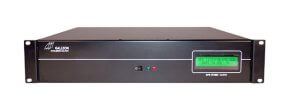Importance of Time Synchronisation when Working in the Cloud
Cloud computing has been foreseen as being the next big step in the development of information technology with more and more businesses and IT networks becoming cloud reliant and doing away with traditional methods.
The term ‘Cloud Computing’ refers to the use of on demand programs and services online including the storing of information over the internet, and using applications not installed on host machines.
Cloud computing mean that users no longer need to own, install and run software in individual machines, and doesn’t require large capacity storage. It also allows remote computing, enabling users to use the same services, work on the same documents, or access the network at any workstation able to log onto the cloud service.
While these advantages are appealing to businesses enabling them to lower IT costs while providing the same network capabilities, there are disadvantages to cloud computing.
Firstly, to work on the cloud you are reliant on a working network connection. If there is a problem with the line, whether in your locale or with the cloud service provider, you can’t work—even offline.
Secondly, peripherals such as printers and back up drives may not work properly on a cloud-orientated machine, and if you are using a non-specified computer, you won’t be able to access any network hardware unless the specific drivers and software are installed on the machine.
Lack of control is another issue. Being part of a cloud service means that you have to adhere to the terms and conditions of the cloud host, which may affect all sorts of issues such as data ownership and the number of users that can access the system.
Time synchronisation is essential for cloud services, with precise and accurate time needed to ensure that every device that connects to the cloud is logged accurately. Failure to ensure precise time could lead to data getting lost or the wrong version of a job overriding new versions.
To ensure precise time for cloud services, NTP time servers, receiving the time from an atomic clock, are used to maintain accurate and reliable time. A cloud service will essentially be governed by an atomic clock once it is synchronised to an NTP server, so no matter where users are in the world, the cloud service can ensure the correct time is logged preventing data loss and errors.
